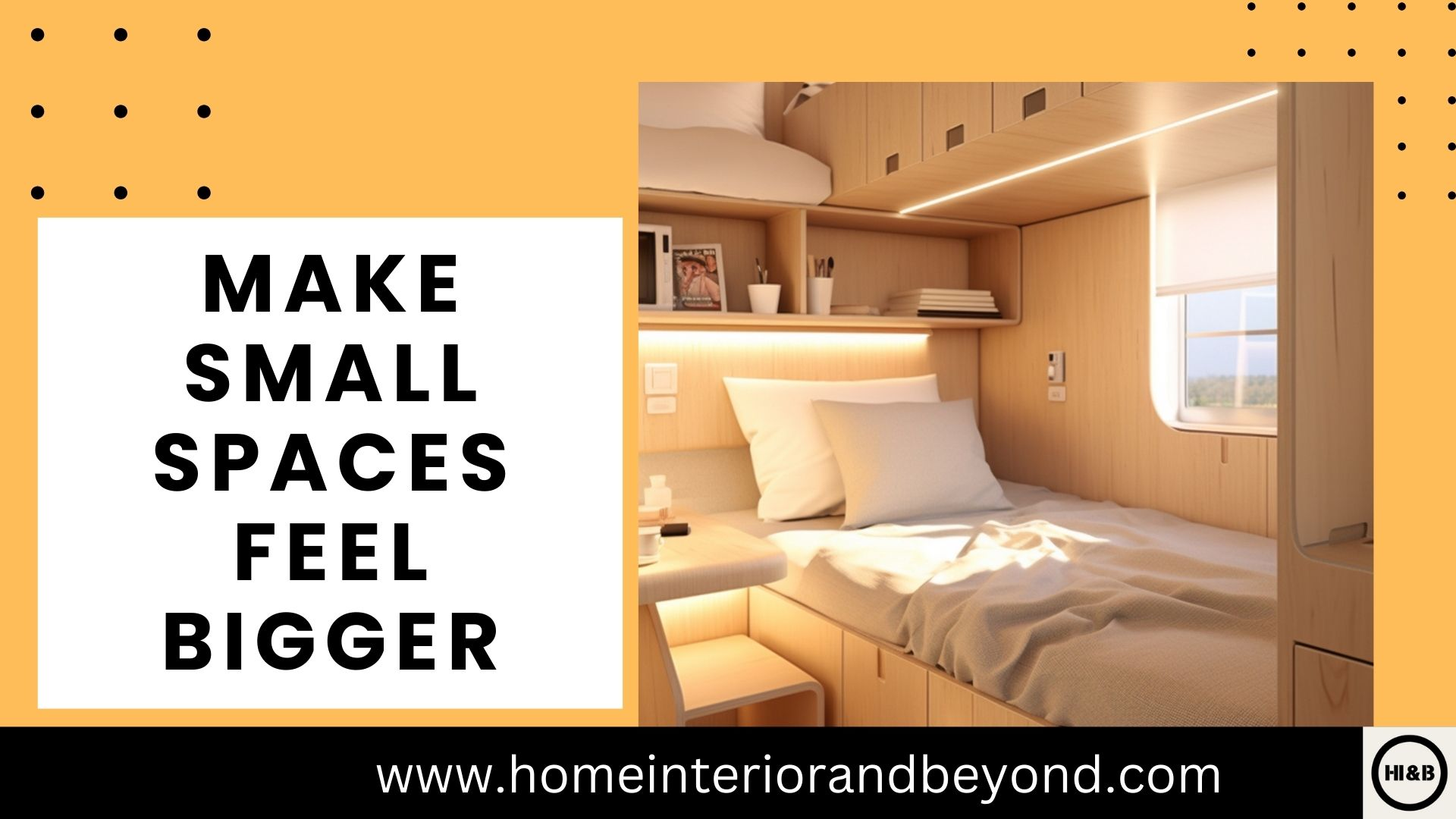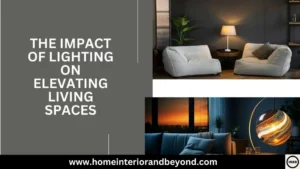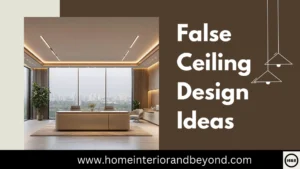Designing small spaces feel bigger can be both a challenge and an opportunity. As an interior designer, I’ve learned that with the right approach, even the smallest rooms can feel open, comfortable, and stylish. Below are practical strategies to maximize space through smart design choices, focusing on light, furniture, verticality, and layout.
I. Play with Light and Color
A. Light, Neutral Colors Make a Room Feel Airy and Spacious
One of the most effective ways to make a small space feel bigger is by choosing light, neutral colors. Lighter shades—such as whites, soft grays, pastels, or creams—create a sense of openness and reflect light, making the room feel airy. Darker hues, while cozy, tend to absorb light, which can make a space feel cramped or confined. By opting for light colors on the walls, ceilings, and larger furniture pieces, the room instantly feels more expansive.
B. Impact of Natural Light
Natural light is a game-changer in small spaces. Keeping windows unobstructed allows the sunlight to flood the room, brightening the space and making it feel larger. Heavy curtains or blinds can block light and create shadows, so consider sheer or light-filtering window treatments instead. You can also position furniture away from windows to allow maximum light to spread throughout the room, further enhancing the openness.
C. Reflective Surfaces
Using reflective surfaces, such as glass, metallic accents, and glossy finishes, can help amplify light in a small space. These elements bounce natural and artificial light around the room, creating the illusion of more space. Glossy finishes on cabinets or tables can add a sense of depth, while glass coffee tables or decorative items keep the room from feeling cluttered.

II. Embrace Vertical Space
A. Vertical Storage Solutions
When floor space is limited, looking up is the next best step. Vertical storage solutions like tall bookshelves, wall-mounted cabinets, or hanging racks free up valuable floor space while providing ample storage. Stacking items vertically draws the eye upward, making the room feel taller and more spacious.
B. Using Room Height
Maximizing the height of a room is a great way to keep surfaces clear and decluttered. Instead of letting surfaces like tables and counters accumulate items, use floating shelves, hooks, or pegboards to store and display belongings. This keeps the room visually open while still providing practical storage.
C. Creating the Illusion of Height
By utilizing vertical space effectively, you can create the illusion of a higher ceiling, making the room feel more expansive. Hanging curtains higher than the window frame or using tall furniture draws the eye upward, emphasizing the height of the room.
III. Use Mirrors Strategically
A. Mirrors to Reflect Light and Create Depth
Mirrors are a classic design tool for making small spaces feel larger. They reflect both natural and artificial light, brightening up the room and creating a sense of depth. A strategically placed mirror can give the illusion of an extended space, making the room appear more open and airy.
B. Mirror Placement
Placing mirrors opposite windows is an effective way to amplify light and extend the visual dimensions of a room. Narrow hallways, entryways, or small living rooms benefit greatly from this trick. Additionally, placing a large mirror behind furniture, such as a sofa or dining table, can enhance the feeling of spaciousness.
C. Doubling the Space with Mirrors
Mirrors can also be used in unexpected ways, like mirrored furniture or accent walls, to visually double the space. These subtle design touches enhance the overall sense of openness without overpowering the room’s style.
IV. Keep it Minimal
A. Reducing Clutter
In small spaces, clutter is the enemy. Too many items can quickly overwhelm the room, making it feel cramped and chaotic. A minimalist approach, with fewer but higher-quality pieces, allows the room to breathe and feel open.
B. Focus on Essential Pieces
When designing small spaces, focus on essential furniture and decor that serve both functional and aesthetic purposes. Avoid over-decorating or filling every corner with objects; instead, let the space itself stand out by keeping surfaces clean and open.
C. Uncluttered Space Equals Openness
An uncluttered space inherently feels larger. By maintaining clean lines, simple furniture, and minimal accessories, you allow the space to remain visually light and airy, creating a more comfortable and inviting environment.
Conclusion
Making small spaces feel bigger is all about balancing light, color, furniture choices, and smart layouts. By embracing verticality, using multi-functional furniture, and keeping clutter to a minimum, you can transform even the smallest room into a spacious and functional haven. With these design tips, you can maximize every square foot while maintaining a stylish and open atmosphere.




